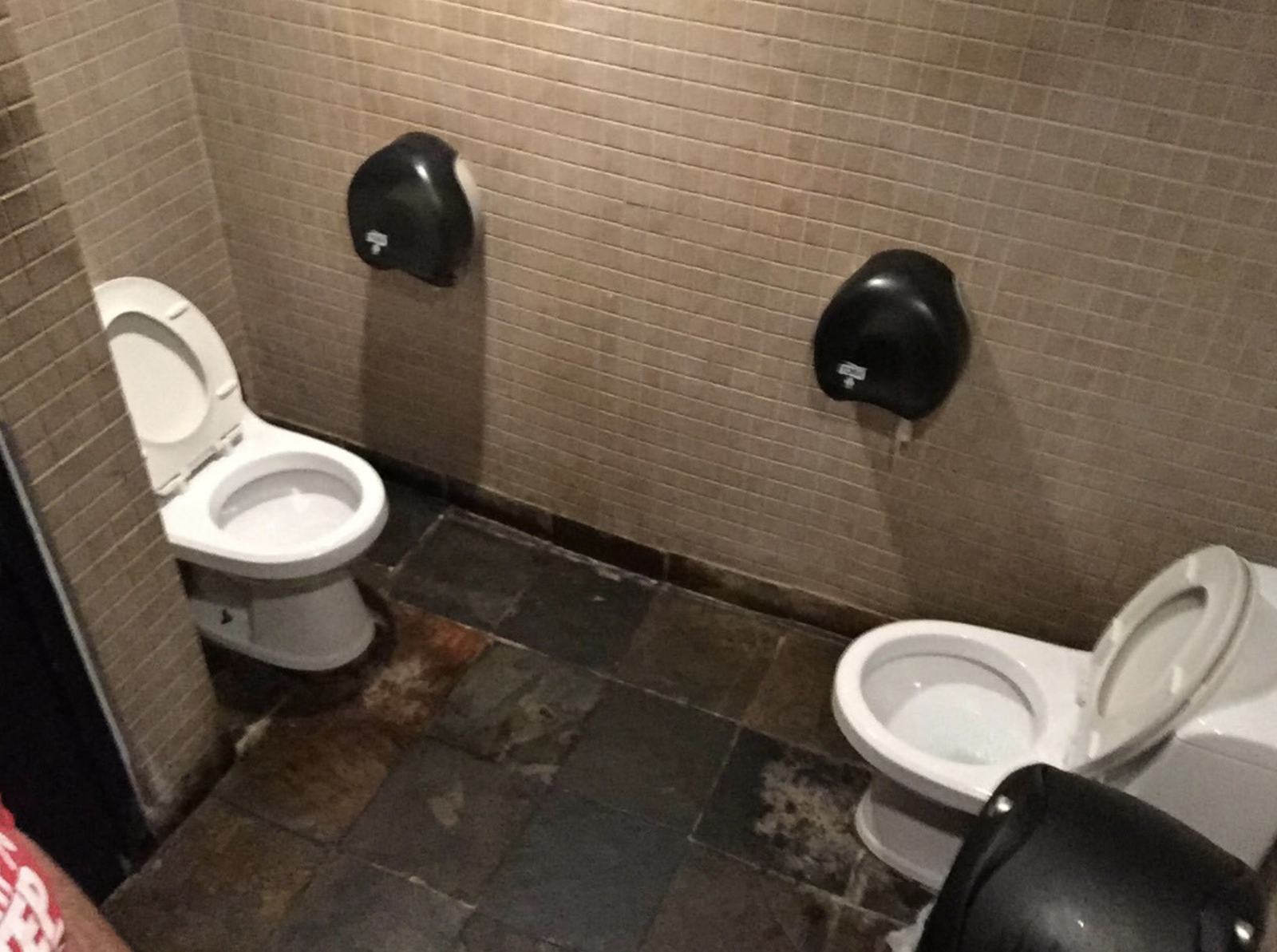Design Considerations for a Dual-Toilet Bathroom

A bathroom with two toilets presents a unique opportunity to create a functional and stylish space that caters to multiple users. This requires careful consideration of design elements to optimize space, enhance functionality, and create a cohesive aesthetic.
Space Optimization and Functionality
Maximizing space in a dual-toilet bathroom is crucial for ensuring comfort and ease of use. A well-planned layout can make the space feel larger and more efficient.
- Strategic Toilet Placement: Placing the toilets side-by-side, back-to-back, or in separate alcoves can maximize space while maintaining privacy. Consider the flow of traffic and the proximity to other fixtures.
- Wall-Mounted Fixtures: Wall-mounted sinks, vanities, and mirrors can create a sense of spaciousness by minimizing floor clutter. This also allows for easier cleaning and maintenance.
- Compact Storage Solutions: Utilize vertical space with tall cabinets, shelves, or built-in storage units to keep essentials organized and out of sight.
- Multi-Functional Furniture: Consider using a vanity with built-in storage or a console table that doubles as a countertop.
Layout and Placement of Fixtures
The layout of the bathroom is crucial for creating a functional and comfortable space. Careful consideration should be given to the placement of toilets, sinks, and other fixtures.
- Toilet Placement: The toilets should be placed in a location that allows for easy access and provides sufficient privacy. A distance of at least 30 inches between the toilets is recommended to prevent overcrowding.
- Sink Placement: Sinks should be positioned in a way that allows for comfortable use without obstructing traffic flow. Consider placing them near a window for natural light.
- Shower or Tub Placement: If a shower or tub is included, it should be placed in a location that allows for easy access and provides sufficient space for movement.
- Door Placement: The door should be placed in a location that allows for easy access and does not obstruct traffic flow.
Styles and Aesthetics
A bathroom with two toilets can be designed in a variety of styles to complement the overall aesthetic of the home.
- Modern: Modern bathrooms are characterized by clean lines, minimalist design, and a focus on functionality. Use sleek fixtures, neutral colors, and natural materials such as stone or wood.
- Traditional: Traditional bathrooms feature classic elements such as ornate moldings, decorative fixtures, and warm color palettes. Consider incorporating elements like wainscoting, crown molding, and antique-style faucets.
- Minimalist: Minimalist bathrooms emphasize simplicity and functionality. Use a limited color palette, streamlined fixtures, and open spaces. Natural light and a sense of tranquility are key elements.
Practical Considerations for Installing Two Toilets: Bathroom With Two Toilets

Installing two toilets in a bathroom can significantly improve convenience and efficiency, especially in homes with multiple occupants. However, it’s crucial to carefully consider practical aspects before embarking on this project. This section delves into the steps involved, considerations for choosing the right toilets, and potential challenges and solutions.
Plumbing and Electrical Considerations
Installing two toilets requires careful planning and execution to ensure proper plumbing and electrical connections.
- Plumbing: Installing two toilets necessitates connecting them to the existing plumbing system. This may involve extending existing water lines, installing new drain lines, or adjusting the existing plumbing configuration to accommodate the additional fixture. It’s essential to ensure adequate water pressure and drainage capacity to support both toilets.
- Electrical: If the bathroom has a single electrical outlet, installing two toilets may require adding an additional outlet to power both. This involves running new electrical wiring to the desired location and installing a new outlet box. It’s crucial to comply with local electrical codes and hire a qualified electrician for this task.
Choosing the Right Toilets for a Dual-Toilet Setup, Bathroom with two toilets
Selecting the right toilets for a dual-toilet setup is essential for maximizing functionality and efficiency.
- Water Efficiency: Water-efficient toilets are crucial for reducing water consumption and saving money on utility bills. Look for toilets with a WaterSense label, indicating they meet EPA standards for water efficiency.
- Style and Design: Toilets come in various styles and designs, ranging from traditional to modern. Consider the overall aesthetic of the bathroom and choose toilets that complement the existing decor.
- Size and Space: Consider the available space in the bathroom when selecting toilets. Compact toilets are ideal for smaller bathrooms, while larger models may be necessary for spacious bathrooms.
- Features: Some toilets offer additional features like automatic flushing, soft-close seats, and dual-flush systems, which can enhance convenience and functionality.
Potential Challenges and Solutions
Installing two toilets in an existing bathroom can present challenges, but these can be overcome with careful planning and execution.
- Space Constraints: Limited space can be a significant challenge when installing two toilets. Carefully measure the available space and consider compact toilets or a creative layout to optimize space.
- Plumbing Access: Accessing existing plumbing lines for connection can be difficult, especially in older homes. It may be necessary to relocate plumbing fixtures or create access points for installation.
- Electrical Access: Similar to plumbing access, reaching electrical outlets for new installations may require rerouting wires or creating new access points.
- Cost: Installing two toilets can be expensive, especially if significant plumbing or electrical work is required. Plan the budget carefully and explore cost-saving options, such as purchasing toilets during sales or discounts.
